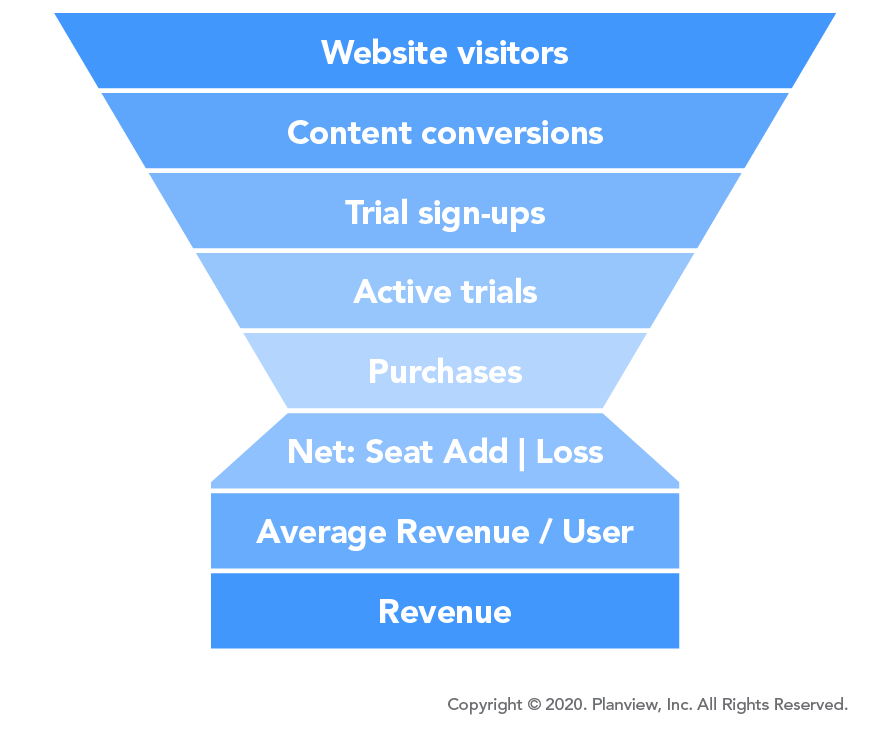
Making the shift from organizing work around products to orienting around value plays a key role in scaling Agile across the organization. But it can also be confusing: what exactly IS a value stream, and how do you go about identifying the value streams in your business?
Our recent ebook, How to Identify Your Value Streams: The Value Behind the Business, answers these questions and more. Let’s review some strategies for finding out which value streams to create at your company.
- Ask why you’re in business. It’s best to start simple: ask yourself why your organization is in business and what types of value you deliver. What do you do? What products and services do you provide? Your corporate website can be useful here. Look at the Products, Solutions, or Services sections. These top-level buckets aren’t necessarily your value streams but are usually a decent place to start.
- Consider your end products vs. your capabilities. Value is created in different ways inside an organization. Some outputs deliver value directly to the customer via a core product or service, while some support the internal processes that make that value delivery possible. Two types of value streams exist to support and represent this paradigm: operational value streams and development value streams.
We explain the difference between the two types of value streams here in more detail. At a high level, operational value streams lead directly to the “product”: they represent the value that your business offers to its customers. Development value streams are the systems, applications, and assets (internal processes) that keep operational value streams going and enable that value delivery. When you’re identifying your value streams, it’s important to consider both types.

- Find areas of persistent demand. With the two types of value streams in mind, run some historical analysis. Where has your business seen persistent demand? In other words, what types of value have you historically spent money to create? This data should paint a pretty clear picture of your top operational value streams.
Historical data can also help with resource allocation (aligning the right people to the right work). Value streams aren’t just theoretical, they are active constructs for organizing work. That means they require people and funding, just like traditional projects. Unlike traditional projects, however, value streams are aligned to the flow of value vs. project-centric deliverables. This makes it easier to identify and address roadblocks and waste in your operations as well as fund different steps of the process appropriately, depending on need and outcomes. - Use a value stream funnel. Once you’ve identified a value stream at your company, double-check its validity with the “funnel test”: can your proposed value stream be mapped and measured as a funnel?
A value stream funnel shows how potential customers would move from one step to another through an organization’s value stream toward the purchase of a product or service and beyond. It ensures that the steps in your value stream do indeed lead to the creation of end-customer value. The example below shows a value stream for a company that sells SaaS products; in this example, the product, or value being created, is the software itself.

- Map OKRs to your value stream funnel. OKRs – objectives and key results – are the outcomes of your value stream. They represent the shared mission of both the operational value stream and the development value streams that support it. The value stream funnel can help solidify and align around OKRs by making sure that everyone throughout the value stream is focused on the outcomes at the bottom of the shared funnel. This approach uplevels the ultimate goals of each step of the process to help team members “see the forest for the trees.”
- Align people to value streams using ARTs. Value streams provide a means to organize work around customer value; Agile Release Trains, or ARTs, are virtual organizations that do the same for people. ARTs offer a mechanism to create and manage the cross-functional teams needed within value streams, operating in parallel to existing organizational hierarchies as organizations realign how work is funded and executed.
ARTs align people to value streams to build or deliver the value stream’s products and services. They may or may not have a one-to-one relationship with value streams, depending on the size of the value stream. They always, however, serve to structure “teams of teams” in a persistent and stable way to support the values streams’ end goals.
While value streams can seem esoteric at first, they become more tangible as you think about the value that your business delivers, and the steps required to do so. Start with one value stream and build from there. Value streams not only set your organization up for Agile success, they act as a powerful reminder of why your business is important to its customers.
For more information on identifying and implementing value streams, check out the ebook, How to Identify Your Value Streams: The Value Behind the Business.




